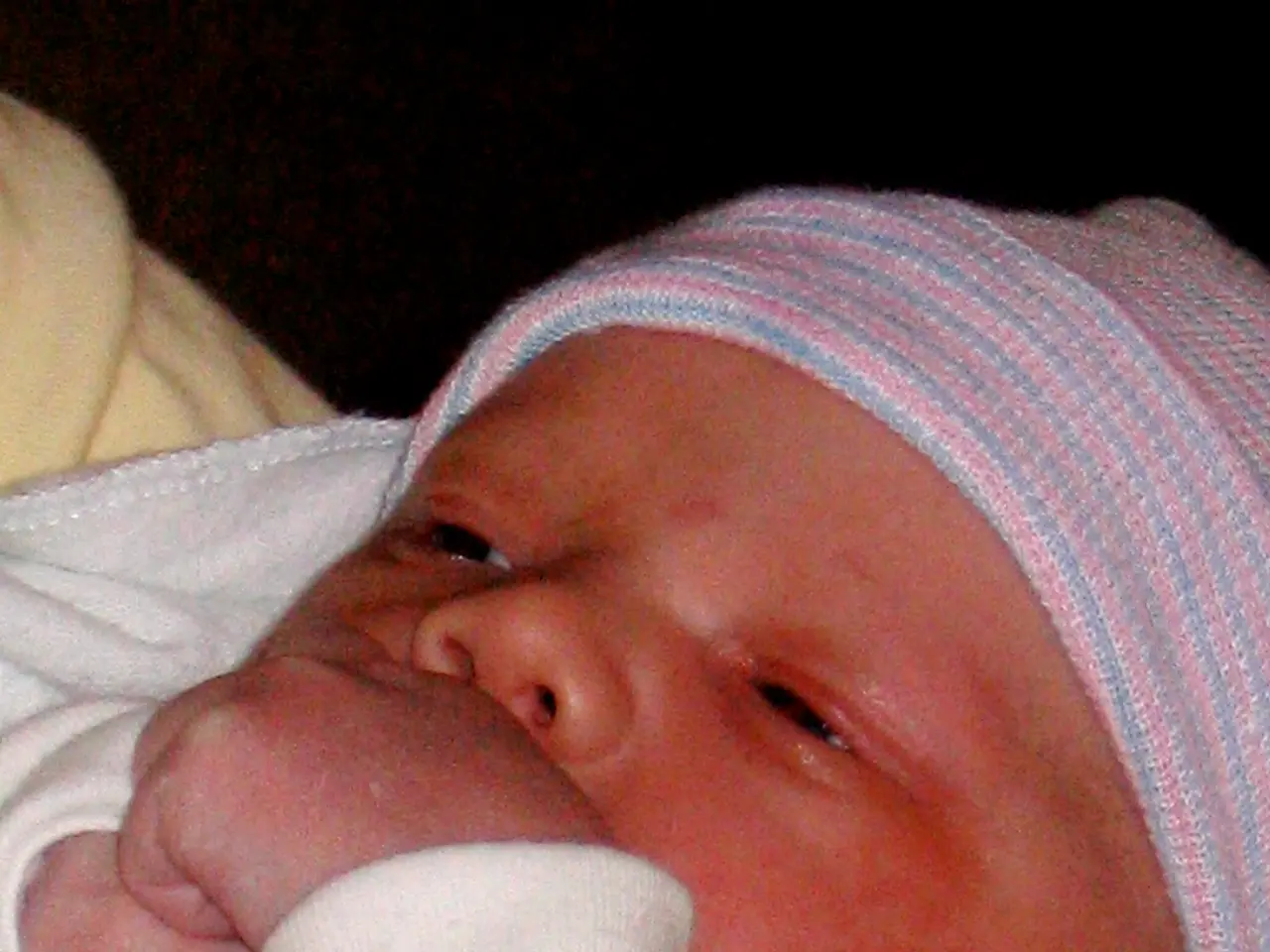Lymphangioma Manifestations in Infants and Juvenile Youngsters
Lymphangiomas are uncommon benign malformations of the lymphatic system that can cause significant health issues in infants and young children. These malformations can occur on the skin and mucous membranes, often leading to complications such as compression onto nearby structures or rapid expansion in size.
Lymphangiomas can be classified into three types: Capillary (Simple), Cavernous, and Cystic Hygroma. Capillary lymphangiomas are situated close to the surface of the skin and are made up of small, thin-walled lymph vessels. Cystic Hygromas, on the other hand, consist of lymphatic spaces varying in size, containing clear, milky, bloody or pus-like fluid, and are not connected to nearby normal lymph vessels.
Common complications associated with lymphangiomas include infection or inflammation, hemorrhage, rupture, compression of nearby structures, volvulus or bowel obstruction, chronic blood loss, and recurrence after treatment. Infection can lead to an increase in size and may cause symptoms such as pain and difficulty breathing, especially if the lesion is in the neck or chest. Swelling caused by lymphangioma complications can trigger further problems, especially when compressing on nearby structures, such as the airway or digestive tract.
In severe cases, lymphangiomas can cause detrimental health issues. For example, mesenteric lymphangiomas can cause ileal volvulus, leading to acute abdomen, bowel ischemia, and requiring surgery to detorse the bowel and remove the lesion. Large or deep lymphangiomas may produce fetal edema and heart failure if detected prenatally due to fluid shifts and cardiovascular burden. Lymphatic malformations in critical areas like the tongue, mouth, or windpipe can impair breathing and speaking, reflecting local mass effect. Chronic low-grade bleeding from lymphangioma vesicles can result in iron deficiency anemia, an uncommon but noteworthy complication.
Surgical intervention may be required to address acute complications such as volvulus or hemorrhage. Some lymphangiomas may regress or be managed conservatively if stable and asymptomatic. Long-term follow-up is critical to detect recurrence or late sequelae.
Treatment options for lymphangiomas include surgery, sclerotherapy, laser therapy, or radiofrequency, depending on the size, location, and severity of the lesion. Sclerotherapy involves a sclerosing agent being injected directly into the lymphangioma, causing the lining of the cysts to be irritated and eventually shrink over time. Fine needle aspiration (FNA) may be performed to sample fluid within the mass, especially when there is uncertainty regarding the lymphangioma or to rule out other conditions.
Multidisciplinary management and long-term follow-up may be required to help manage treatment, monitor recurrence, and provide support for optimal outcomes for the child's health and well-being. It is essential to remember that lymphangiomas are most commonly present between birth to 5 years old, and ultrasounds are applied to identify cysts before birth and can help determine whether the lymphangioma is cystic or solid.
Lymphangiomas occurring in visible areas such as the face or neck may lead to psychosocial challenges for the child, such as low self-esteem or social anxiety. Infected lesions may lead to further secondary complications such as lymphoedema.
In conclusion, lymphangiomas can cause a range of complications, some of which can be severe and require prompt medical attention. Careful monitoring and timely intervention depending on symptoms, lesion location, and growth dynamics are crucial for managing these conditions effectively.
- Mental health and wellness of children with lymphangiomas can be impacted by psychosocial challenges due to visible lesions on the face or neck.
- Science and medical research are essential for understanding the treatment options available for chronic diseases like lymphangiomas, such as surgery, sclerotherapy, laser therapy, and radiofrequency.
- Health-and-wellness resources should provide support for families dealing with lymphangiomas, including information about the disease, treatments, and potential complications like iron deficiency anemia.
- Fitness-and-exercise routines can be beneficial for improving overall health and strengthening the immune system, which may help manage lymphangioma complications.
- Sexual-health education is crucial for parents and children affected by lymphangiomas, as complications such as infection could affect intimacy and relationships.
- Skin-care recommendations should be considered for individuals with lymphangiomas, as skin conditions like psoriasis may coexist and require specific treatment.
- Aging can bring about neurological disorders that may require consideration when managing lymphangiomas in older individuals.
- Women's-health concerns must be addressed through regular healthcare visits and screenings, as lymphangiomas can affect multiple areas of a woman's health, including reproductive health.
- Parenthood can be especially challenging when dealing with severe health issues in a child, and parenting support groups can offer valuable resources and emotional support.
- Recurrence of lymphangiomas should be closely monitored through long-term follow-up appointments to ensure optimal health outcomes, especially in infants and young children who are most susceptible to complications.




